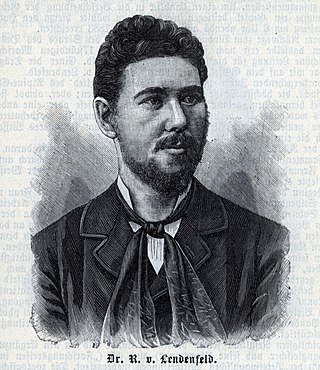
Molybdenum is a chemical element; it has symbol Mo and atomic number 42. The name derived from Ancient Greek Μόλυβδος molybdos, meaning lead, since its ores were confused with lead ores. Molybdenum minerals have been known throughout history, but the element was discovered in 1778 by Carl Wilhelm Scheele. The metal was first isolated in 1781 by Peter Jacob Hjelm.

Tethya is a genus of sea sponges belonging to the family Tethyidae. Members of this genus all have a spherical body form and some are known to be able to move at speeds of between 1 and 4 mm per day.

Ancorinidae is a family of marine sponges belonging to the order of Tetractinellida.
Geodia acanthylastra is a sponge species from the family Geodiidae. The species is found in the waters of the Pacific Ocean off the coast of California and was first described by Robert Lendenfeld in 1910.

Tetractinellida is an order of sea sponges belonging to the class Demospongiae. First described in 1876, this order received a new description in 2012 and replaced the two orders Astrophorida and Spirophorida, which then became sub-orders as Astrophorina and Spirophorina.

Thorectidae is a family of sea sponges in the order Dictyoceratida.
Callyspongia elegans is a species of demosponge in the genus Callyspongia.

Tedania is a genus of sea sponges in the family Tedaniidae.

Robert J. Lendlmayer von Lendenfeld (1858-1913) was an Austrian zoologist, alpinist, and traveler. He was also a notable spongiologist.
Dactylia elegans is a species of demosponges in the family Callyspongiidae. It is found in Western Australia.

Pandea is a genus of hydrozoans of the family Pandeidae.
Geodia breviana is a species of sponge in the family Geodiidae. It is found in the waters of the Pacific Ocean off the coast of California. It was first described by Robert J. Lendlmayer von Lendenfeld in 1910.
Geodia ataxastra is a species of sponge in the family Geodiidae. It is found in the waters of the Pacific Ocean near the coasts of Panama and Colombia. The species was first described by Robert J. Lendlmayer von Lendenfeld in 1910.
Geodia erinacea is a species of sponge in the family Geodiidae. The species was first described by Lendenfeld in 1888. It is found in all the coastal waters of Australia.
Axinyssa is a genus of sea sponges belonging to the family Halichondriidae.
Leiosella is a genus of sponges belonging to the family Spongiidae.

Dysidea is a genus of sponges belonging to the family Dysideidae.

Strongylacidon is a genus of sponges in the family Chondropsidae. The species of this genus are found in Southern Hemisphere.
Manihinea is a genus of deep-water sea sponge in the Theonellidae family, first described by Gustavo Pulitzer-Finali in 1993. The generic description was emended in 2002 by Pisera and Lévi.









